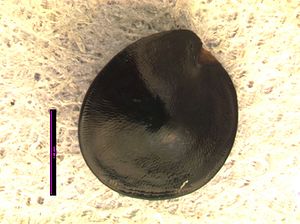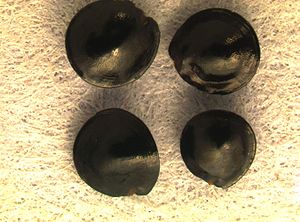Difference between revisions of "Montia linearis"
| Line 17: | Line 17: | ||
'''Longitudinal Cross Section:''' elliptical [[File:MOLI-log-cross.png]] | '''Longitudinal Cross Section:''' elliptical [[File:MOLI-log-cross.png]] | ||
| − | [[File:Montia linearis single.jpg|300px|thumb|left| | + | [[File:Montia linearis single.jpg|300px|thumb|left|Montia linearis]] |
| − | [[File:Montia linearis.jpg|300px|thumb|left| | + | [[File:Montia linearis.jpg|300px|thumb|left|Montia linearis]] |
{{Basics}} | {{Basics}} | ||
Revision as of 12:28, 14 February 2012
Latitudinal Cross Section:![]() Longitudinal Cross Section:
Longitudinal Cross Section: ![]()
Could be confused with: Caladrinia ciliata
Seed
Montia linearis: MOLI
Seed sample from: 2011
Measurement: 2.2 x 2.2 x 1
Features: Seed lenticular in shape. Hilium scar is white, surrounded by a ring of brown. Seed is dark red to black. Could be confused with: Caladrinia ciliata
Seeds are papillose with some small ridges around the surface edges.
Latitudinal Cross Section: : rhombic ![]()
Longitudinal Cross Section: elliptical ![]()
Basic Explanations and Assumptions:
The dimensions for the seeds are length x width x depth. The location of the hilum is used as the base of the seed, and the length is measured from hilum to the opposite apex. Where a style is present, the length is measured from the hilum to the bottom of the style. Width is measured at a right angle to the length at the widest part. Depth is measured at a right angle to the intersection of height and width lines.
Measurements included are the mean average for each measurement of ten separate seeds.
All measurements in millimeters unless otherwise noted.


